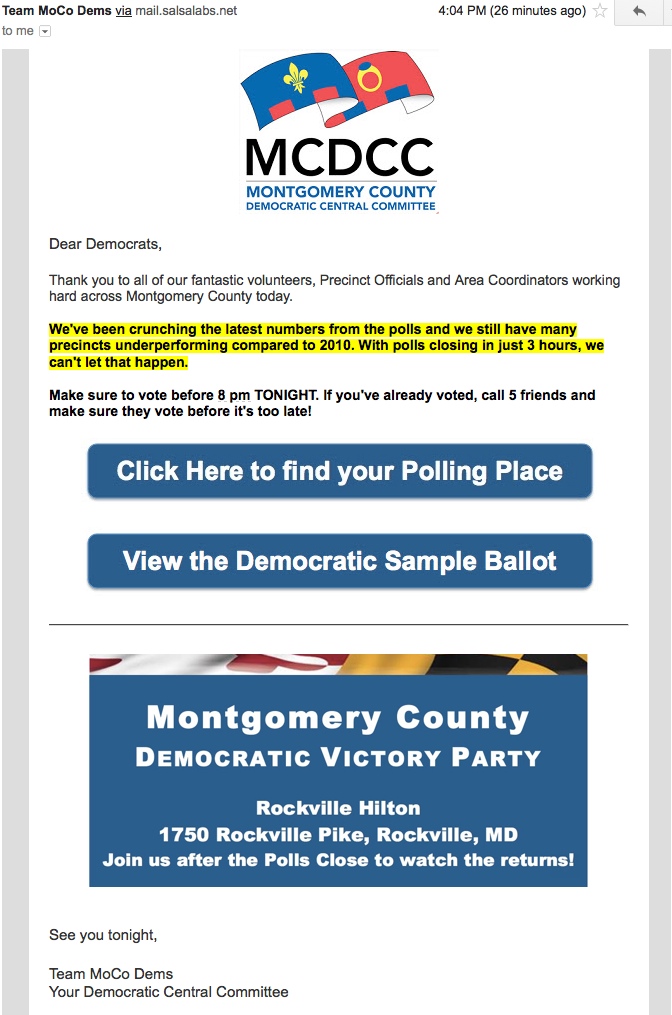The Republicans had a good Tuesday night, capturing the governor’s mansion and making gains, albeit limited, in both houses of the General Assembly. The GOP also made gains in six counties. Summing up the night–they went from 25% to 44% of county executives and from 54% to 56% of council seats.
The most exciting pickups for the Republicans are the two county executives, including taking the top chair in red-leaning Wicomico, But the Republicans had a real coup with Alan Kittleman’s victory in Howard–an increasingly Democratic county that went for Hogan as well as Kittleman.
Republicans also made gains in four county councils: Baltimore, Harford, St. Mary’s, and Talbot. In the latter three, the Republicans knocked all of the remaining Democrats by taking their last two seats in Harford and one seat in St. Mary’s and Talbot. In Baltimore, the Democratic majority shrank from 5-2 to 4-3 with the loss of retiring Councilmember John Olszewski Senior’s seat.
The one bright spot of the night was Frederick. Though the two Democratic Youngs won, the tea-party Republican son of Sen. Young lost the battle to become Frederick’s first county executive. The Democrats also picked up two seats on the new expanded Council. One Republican seat is sufficiently close that there is an outside chance that absentees could flip it to the Democrats.
The same four jurisdictions completely dominated by the Democrats before the election–Baltimore City, Charles, Montgomery, and Prince George’s–remain so afterwards. Republicans wholly controlled eight counties before the election: Allegany, Calvert, Caroline, Carrol, Cecil, Garrett, Queen Anne’s, and Washington. They have now added three more with Harford, St. Mary’s, and Talbot for a total of 12–a majority of all of the 23 jurisdictions, though certainly not the most populous ones.
The partisan state of play remains unchanged in purple Anne Arundel, Dorchester, Kent, Somerset, and Worcester. Anne Arundel will have the interesting challenge of dealing with secessionist theocrat Michael Peroutka on the Council. And just when they hoped things were finally settling down after the rather eventful departure of disgraced County Executive John Leopold.
No Councils flipped control. However, Howard’s Democratic majority will face a Republican executive, while Wicomico now has unified government with a Republican executive and council.









